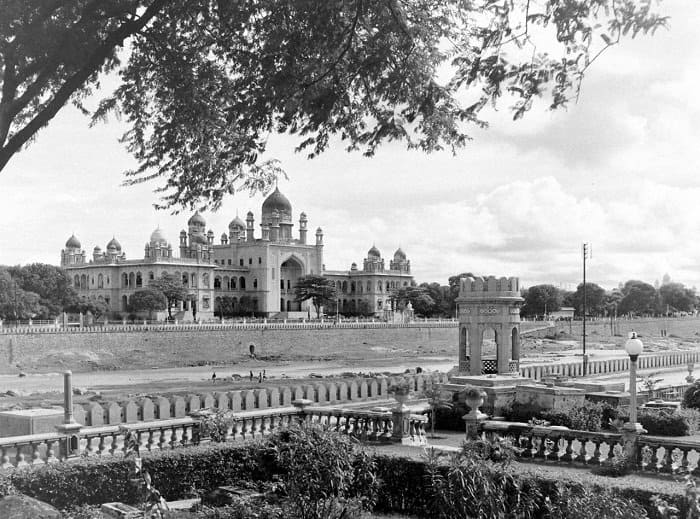Yunus Y. Lasania
Hyderabad: Heritage is defined as something that is handed down from one generation to another. However, for the future generations of Hyderabadis, there may not be much to receive, given the rate at which Hyderabad seems to be losing its heritage buildings, which are a reminder of its rich history and culture. Case in point is the Osmania General Hospital’s old heritage structure, which was ordered to be vacated and sealed shut on Wednesday, leading to fears that it would be demolished soon.
Heritage activists apprehend that it will meet the same fate as the secretariat buildings, which are in the process of demolition (with the state government constructing a new one), but the question on everyone’s mind is this: why does the state government or Chief Minister K. Chandrashekar Rao (KCR) is bent upon obliterating not saving the rich heritage of Telangana, especially Hyderabad?
“Across the world, governments are increasing facilities to deal with the ongoing coronavirus (Covid-19) pandemic, but here they have closed a hospital,” said Dr. Iqbal Javeed, an alumnus of Osmania Medical College, whose father Dr. Mohammed Osman had worked at OGH. He pointed out that the old OGH building is structurally intact, and that this was mentioned in a report by the Indian National Trust for Art and Cultural Heritage (INTACH) in 2015, when there was talk of OGH’s demolition.
In its 2015 report, the INTACH team which inspected OGH said that the OGH’s old building was structurally sound, and that all “damages observed are mostly on the surface of the building and are within the purview of reparability…”.
While a lobby of doctors want a new building to be built in place of the old one, there are other doctors who believe that the ruling dispensation wants to do away with heritage sites that remind the city of its last Nizam Mir Osman Ali Khan, during whose reign (1911-48) the OGH was built.
Another doctor from OGH and a former alumnus of OGH who did not want to be named, alleged that the current Telangana Rashtra Samithi (TRS) government, like others, is no different. “The state government recently restored the Government City College because KCR studied there. It is also a heritage structure. So why can’t they restore OGH?” he questioned.
When asked about the ongoing issue about OGH, a senior TRS leader, who also did not wish to be named, said that the chief minister simply wanted to construct a new hospital for the public. “The move to dismantle the old building was opposed by heritage activists then. It was built by the Nizam and was simply doing its work,” he stated, but refused to say what would happen next.
It may be recalled that the Telangana High Court stayed the demolition plans (by the state government) of the historic Irrum Manzil after heritage activists went to court last year.
We have Charminar and Salar Jung Museum for heritage; don’t need OGH’s old building, says J Rajender
Among those who have been vocal to demolish OGH’s old building, is Jupally Rajender, president of the Telangana Medical and Health Gazetted Officers Association. “OGH gets patients even from other states, from places like Bidar and Nanded. They come here because OGH is a reputed name, but the old building is in a bad condition, so it needs to be demolished for a new one to be built,” he said.
On pointing out that heritage activists want the old building to stay, given its historical relevance, Rajender stated that there is no space in the existing premises. “Charminar is a heritage structure, and it is being maintained. Here, it is not being repaired. There are other places like Golconda fort and Salar Jung Museum for heritage,” he added.
It may be pointed out that compared to other structures and monuments, the SJM is relatively new, having been built in 1951. OGH was completed in 1925, after Hyderabad was affected by the bubonic plague around 1911. The city administration then took care of the issue, following which Osman Ali Khan set up the City Improvement Board (CIB) in 1912 to relook at Hyderabad’s infrastructure.
The CIB transformed the medieval city into a modern metropolis, complete with infrastructure like the High Court, railway stations, schools and OGH. Osmania hospital in fact was the first choice for everyone in Hyderabad then.

The writer is a Hyderabad-based journalist, who has previously worked for The New Indian Express, The Hindu and Mint.

